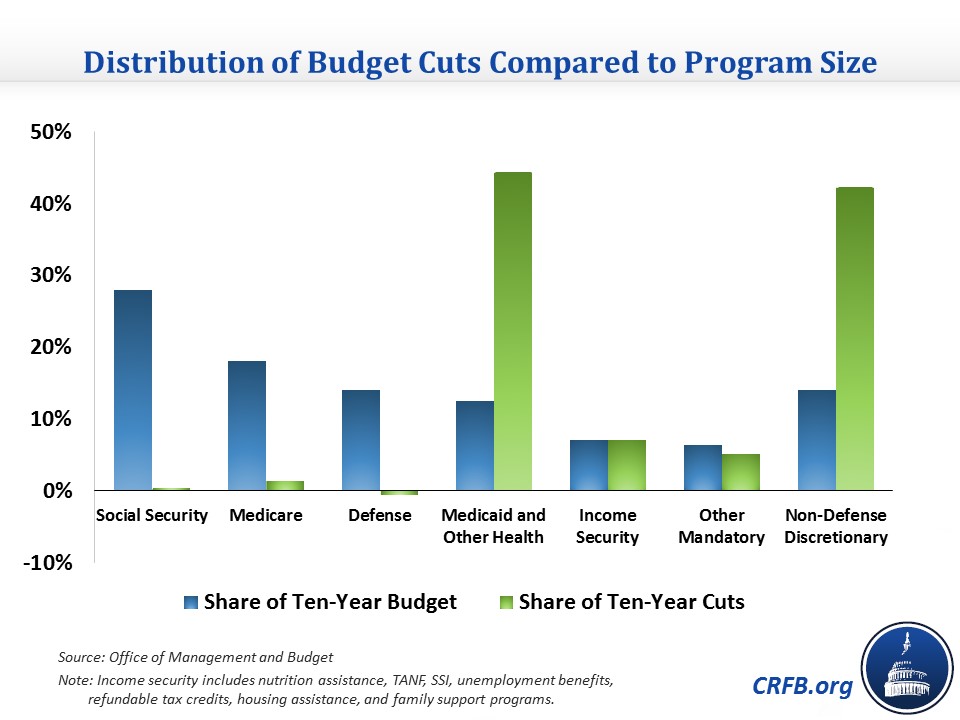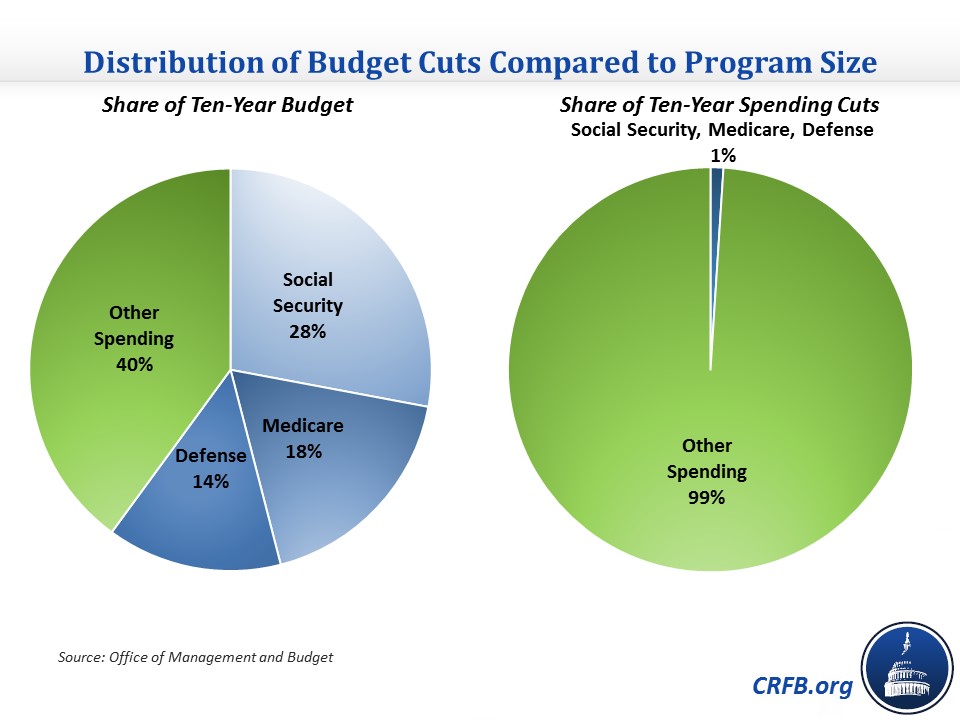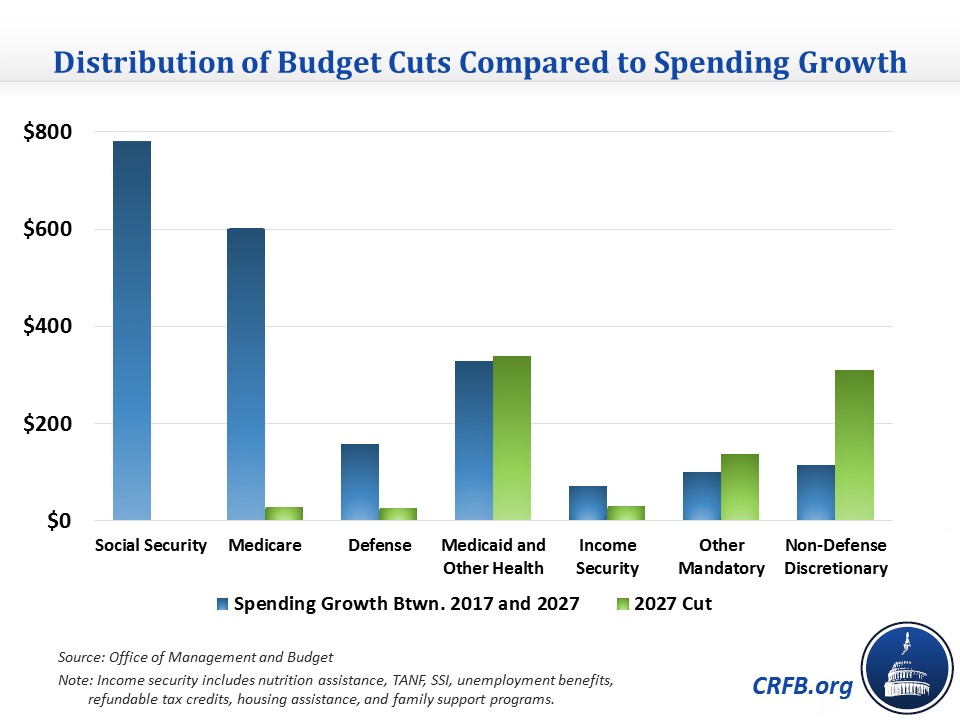How the President's Budget Cuts Are Distributed
The President's budget includes sizeable cuts to federal spending to reduce deficits, but how are those cuts distributed?
The budget shows that most of the cuts on net come from two areas: health care programs (other than Medicare) and non-defense discretionary (NDD) spending. These areas, which make up about one-quarter of projected spending over the next ten years, comprise 86 percent of the spending cuts in the budget. At the same time, cuts to income security programs and other mandatory spending are roughly proportionate to their share of the budget: 12 percent of the budget's cuts compared to 14 percent of total spending. Social Security and Medicare, which make up 46 percent of the budget, get relatively small cuts, making up about 2 percent of the total spending cuts. Finally, defense spending, which is 14 percent of the budget, gets a small increase equal to 1 percent of the net spending cuts (perhaps smaller than one might think since the budget's defense spending cap increases are largely offset by the drawdown in war spending).

Another way to look at it is that the budget largely exempts Social Security, Medicare, and defense from cuts, getting only 1 percent of the total from programs that make up 60 percent of the budget. Meanwhile, essentially all of the spending cuts come from the remaining 40 percent of the budget.

Finally, we can compare the 2027 spending cut in each category to the amount of spending growth expected over the next ten years; in other words, how much the budget reduces the expected growth of each area. Both Social Security and Medicare receive cuts in 2027 that are only a small fraction of the growth expected between 2017 and 2027 – 0.3 and 5 percent, respectively. Defense receives a cut in 2027 (since the war spending cuts outweigh the defense cap increase) that is equal to about one-sixth of its growth. The cuts to income security are somewhat larger, taking up 40 percent of the spending growth expected over the next ten years. In three categories – health programs (other than Medicare), other mandatory programs, and NDD spending – the cut in 2027 is larger than the spending growth, meaning that these areas would shrink in nominal dollars between now and 2027 despite inflation and population growth over that period. The numbers are particularly stark in NDD, where the 2027 cut is nearly three times larger than the projected growth.



